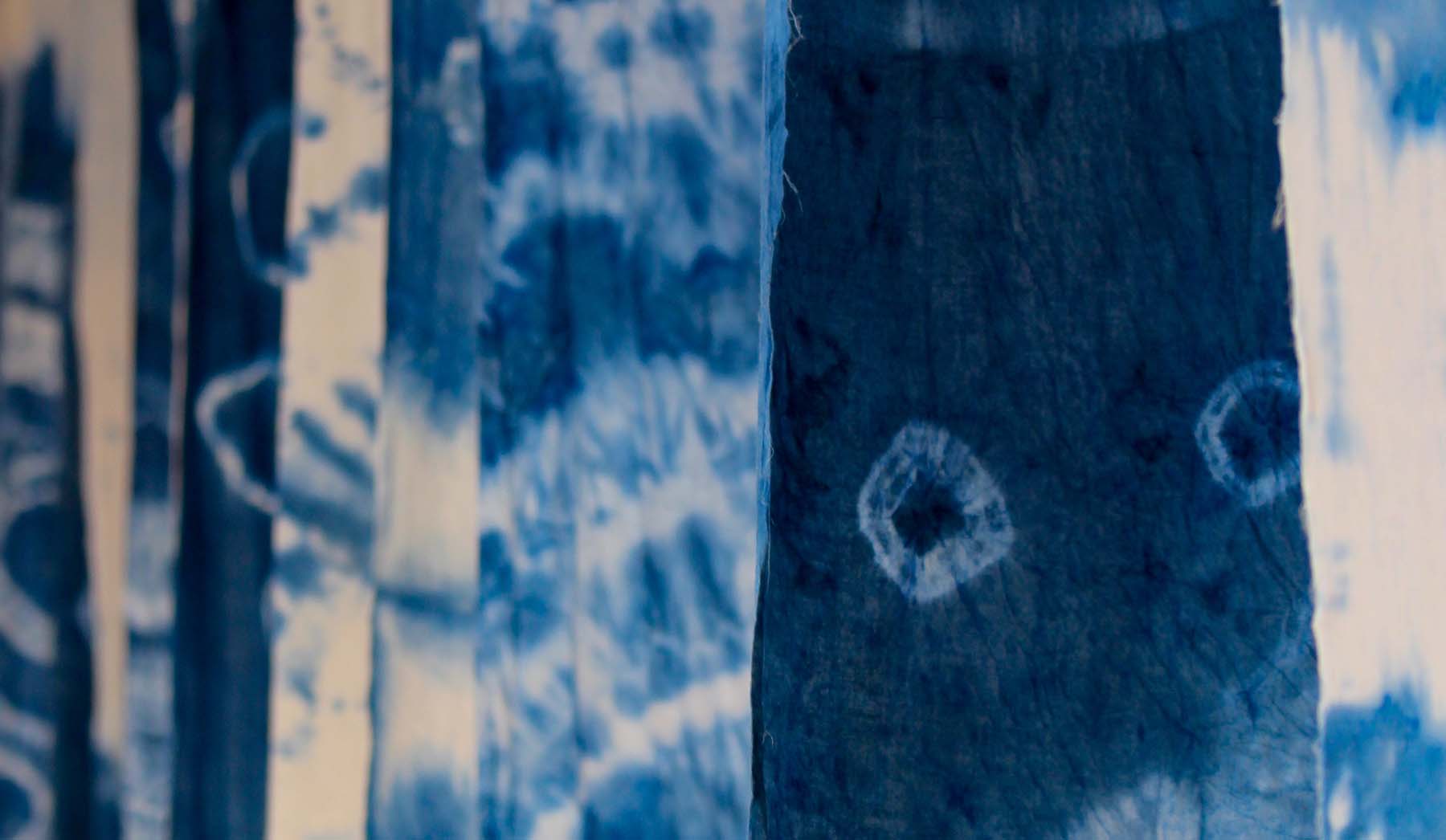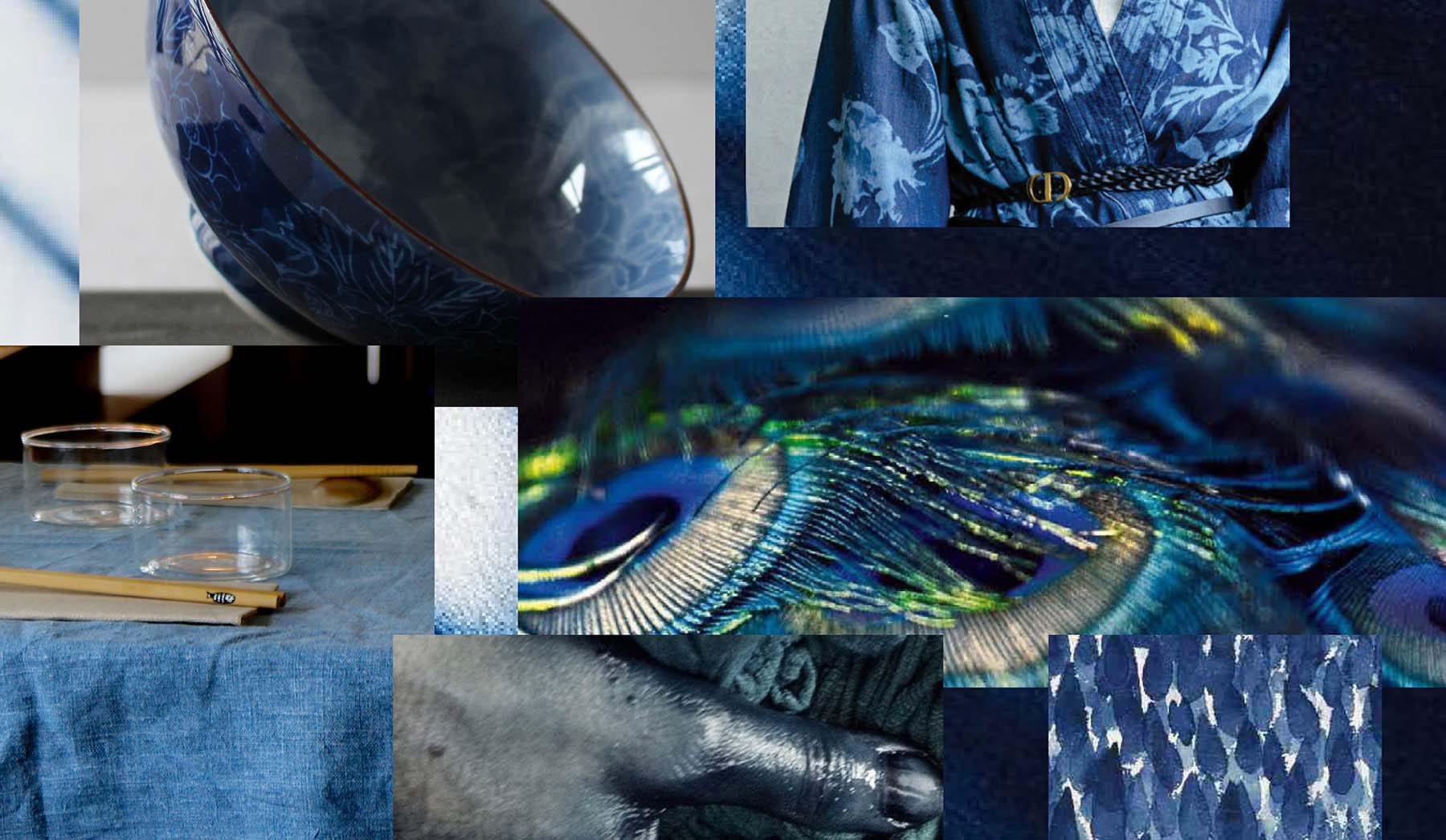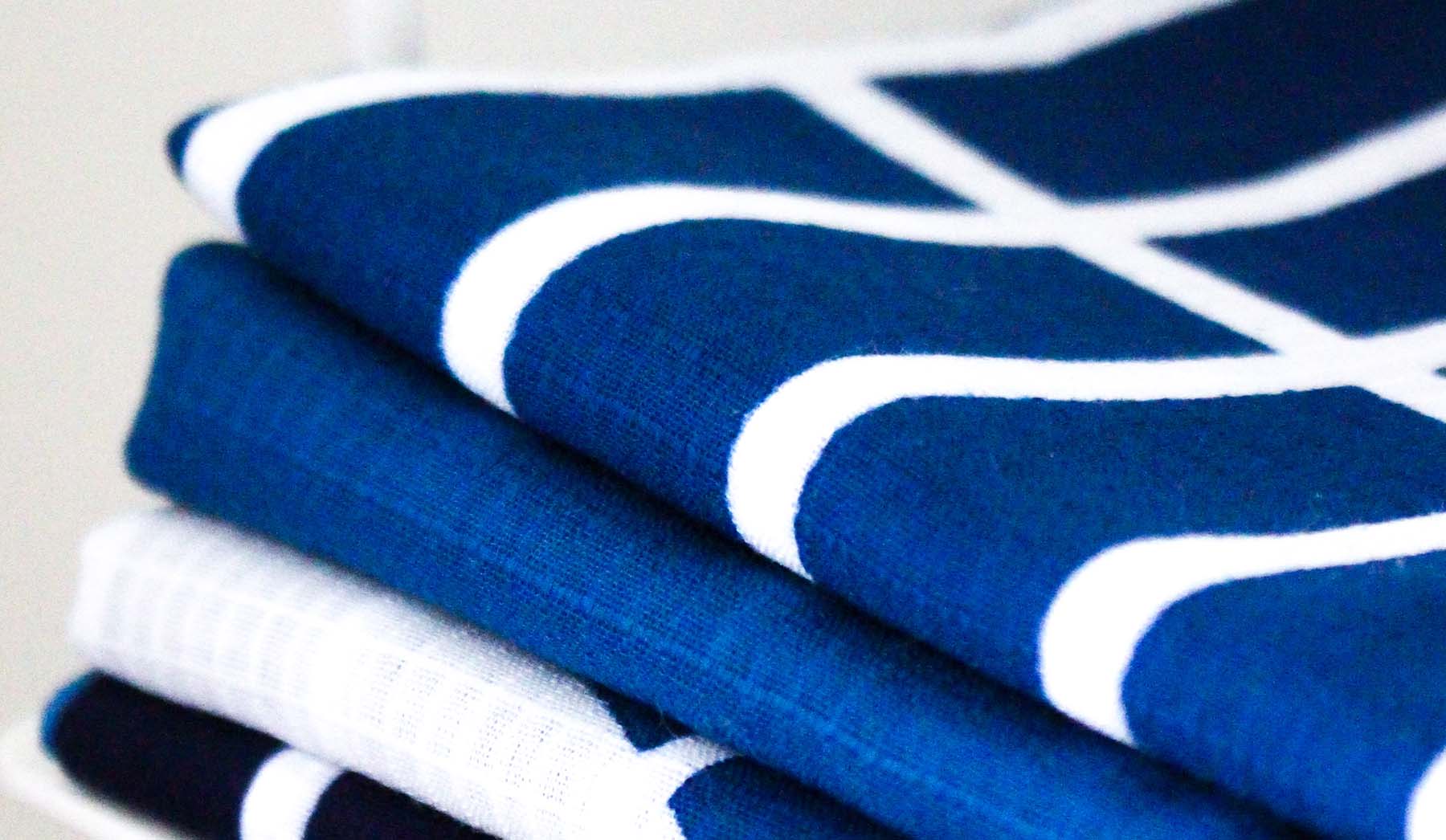
In Asia, following the roads to indigo dyeing
There is this colour which touches our hearts, a colour of evening skies and deep oceans, but also a colour that is as light and transparent as clear water and as soft as forget-me-nots. A mysterious, almost magical colour. This colour is indigo, known on all continents, and which tells stories of patience, of working with the hand, and of miracles taking place. A colour which we usually imagine to be a deep navy blue, but which in reality takes on multiple shades of blue, from the lightest to the darkest. We travel to Asia, following the roads to indigo, which from India to Japan, via Korea, Bhutan and Indonesia, is an eternal source of inspiration and wonder.
Geography of Asian Indigo
For more than 4000 years, indigo has united people of Asia in a sublime quest for blue, a colour which, unlike others, can only be obtained after a long process, the result of hazardous research and intuition, since nothing is apparent of the miracles that can be performed by triturating a plant that is totally foreign-looking to the dye it can produce.
The traditions of indigo dye can be found throughout Asia, and in this article we introduce only a few examples, India, Japan, Indonesia, Korea and Bhutan, some of which are lesser-known than others, but the indigo traditions of China, Laos, Vietnam, Sri Lanka, Cambodia and Thailand could have been added to this list.
Initially it is a leaf that could not be greener. In Asia it is attached to a plant that is not always the same: indigo tree, woad, knotweed, laurel, climbing indigo... wild or cultivated plants, needing tropical heat, or humidity, or temperate calm. These plants do not look alike, and yet they hide the same secret, the same properties, including the indispensable colourless indican, an organic compound, nested in their hearts.
And men and women of Asia have been able to discover its secret. How? a mystery! How does one go from a green leaf to a blue fabric when, unlike other plants used to make natural dyes, there is absolutely nothing obvious, and everything happens by chance encounters, in the slow and complicated process that leads to blue. This is the miracle of indigo!
The slow and patient work of Asian indigo
In praise of patience and mystery, indigo blue is obtained after multiple operations, and the final result can be so random with external elements influencing the process. It is therefore the prerogative of highly specialised craftsmen.
As there are several types of indigo plants, the techniques may vary from one Asian country to another, but the core of the process remains the same as it requires very specific chemical reactions.
Usually the branches of indigo plants are harvested and macerated in water for a few hours or days until the liquid has a thick yellow-brown texture. The surface is then stirred and beaten to introduce oxygen. The substance turns green, then blue, and a thick deposit forms. The remaining liquid is removed, the sediment is heated and then filtered to give a thick paste which is left to dry before being formed into cakes which can be stored for varying lengths of time. These cakes of indigo substance, which are not soluble, must be made soluble by fermentation before being made insoluble again by oxygenation once in contact with the fibres (the final stage). Fermentation is a very slow process that usually takes place in vats, where the substance is mixed with an agent that varies from country to country and region to region: lime, beer, sake, etc. Once the indigo vat is ready (after 30 or 40 days in some cases), the fibres (yarns or textiles already woven) can be soaked in it. It is when the fibres are removed from the vat, when they come into contact with the oxygen in the air, that the blue colour appears. The density of the blue (from lighter to darker) will depend on the number of indigo baths the fibres take.
Nila, the indigo blue of India
Indigo king among all indigos, the indigo Indigofera tinctoria from India is one that has generated multiple fantasies and trade for thousands of years, travelling the Silk Road, an Indian Blue Gold of a rare quality (because it is highly concentrated in active components) that Europe in particular was very fond of until the creation of synthetic indigo.
The textile wealth of India, weaving, dyeing, embroidery, printing techniques, is immense and magnificent, each region, tribes, having its expertise and modes of expression, but indigo blue was not a colour that was much used locally, Blue Gold was mainly an export product around which working conditions were particularly difficult. For 4000 years India also mastered very complex chemical processes to develop indigo dyeing techniques based on the principles of either mordanting (fixing the dye) or resist (resist dyeing). Nila, the indigo of India, is considered to be one of the oldest in the world.
Jjok, the indigo blue of Korea
Historically the Korean indigo, Jjok, and the indigo dye Jjok Yeomsaek, were only used for the Royal family and weddings, and almost did not survive modernity when the Korean War wiped out the cultures and traditions of the main indigo region, Naju (southwest of the peninsula) where a flourishing economy around cotton production and indigo dyeing had developed.
The revival of Korean indigo dyeing is due to one man, Jung Gwan-chae, who became the youngest Living National Treasure, and who for 30 years has been re-establishing indigo cultivation, harvesting and dyeing in the Naju region, using a typically Korean process that uses lime made from powdered oyster or clam shells. The traditional Korean indigo dyeing process has since been designated a National Intangible Cultural Heritage.
Ai, the indigo blue of Japan
Japanese indigo arrived via China (which had brought it from India) 1400 years ago during the Asuka period (592-710), first used by nobles of the imperial court, then by samurai (indigo-dyed waistcoats brought them protection) and then more widely among the population during the Edo period (1600-1868) when very strict rules governed the use of colours and indigo was one of the rare colours authorised in the less favoured social classes, generating a massive blue wave.
As always in Japan, imported techniques never remain static and indigo has undergone numerous transformations and improvements over the years, and has developed a world of exceptionally rich craftsmanship. The indigo plant of Japan is the Persicaria tinctoria, the dyers' knotweed, and even if the techniques for extracting the indigo dye are just as complex and long as everywhere else, Japanese craftsmen have also created, since the 8th century, an extraordinary repertoire for magnifying the indigo by reserving areas of the textile without dye: tying, knotting, sewing, rolling, folding, applying glue or using a stencil, all of these techniques are still alive today.
Tom, the indigo blue of Java (Indonesia)
Since the 19th century, Pekalongan, on the north coast of the island of Java, has been the heart of Indonesian batik, which is listed as an Intangible Heritage by UNESCO. This wonderful textile technique follows a timeless process of applying hot wax, forming dots or lines and using 2 specific tools, the canting, copper stylus and the cap, copper stamp. The dyeing is done by hand and the wax, once removed (by boiling or scraping the fabric), allows the patterns to appear.
From this tradition and its remarkable geographical location on the route between India and China, becoming the largest port in the region in the 19th century, Pekalongan initiated an indigo tradition when the country did not produce indigo, using seeds of the Indian indigofera tinctoria to develop its own plantations to replace sugar cane fields.
Indonesian indigo thus made its appearance in batik textile traditions, alone or in conjunction with the other emblematic colours, red and brown.
Ram, the indigo blue of Bhutan
In Bhutan, dyeing, like weaving, is a woman's business, with traditions passed down from mother to daughter and an immense cultural wealth, which remains secretly in the families. The creation of natural dyes in particular is carried out far from foreign eyes as this knowledge is so precious.
Bhutanese indigo blue is created from local large-leafed shrubs, notably ram, grown in family gardens. The slow handling of the leaves of the indigo plants until the dye is obtained is tedious work, as it is everywhere else, and the whole process is done by only one person, in a quiet environment, with no one watching. To obtain the desired fermentation the local rice beer, chang, is used among other things.
In Bhutan it is the threads (nettle, cotton, hemp, silk - the noblest material, wool) that are dyed and then used for weaving or embroidery, of which each region has its own history, traditions and identity.
Bibliography
For those who are interested in the indigo traditions of Asia, there are some very good books available to perfect their knowledge and to dive with delight into the blue and the textile craft industry:
INDIGO, périple bleu d'une créatrice textile, by Catherine Legrand (Édition de la Martinière)
Textiles Arts of Bhutan, from the Land of the Thunder Dragon, by Diana K. Myers (Timeless Books)
The Fabric of India, by Rosemary Crill (V&A Publishing)
IRO, the Essence of Colour in Japanese Design, by Rossella Menegazzo (Phaidon)
Block Printing and Dyeing of Bagru, Rajasthan, by Bijoy Chandra Mohanty and Jagadish Prasad Mohanty (Calico Museum of Textiles, Ahmedabad, India)
Indian Textiles, by John Gillow and Nicholas Barnard (Thames & Hudson)
The Indian Textile Sourcebook, by Avalon Fotheringham (Thames & Hudson)



